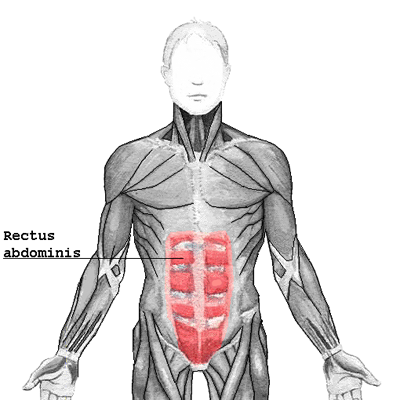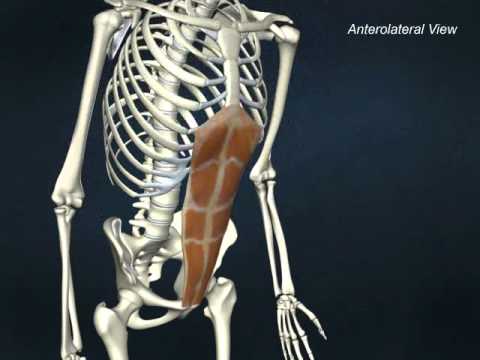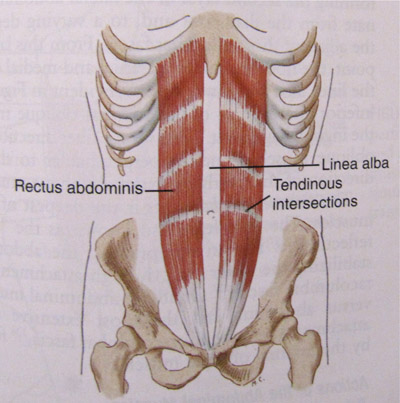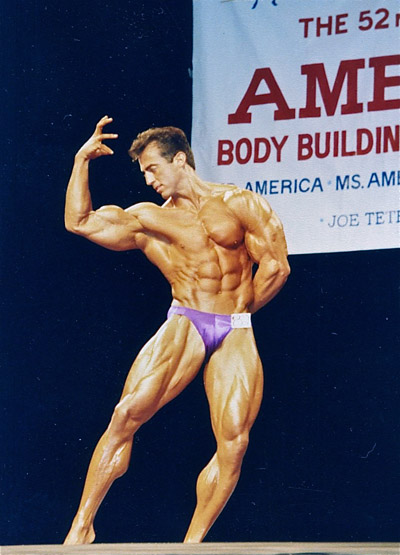According to “Cracked.com”, the Loch Ness Monster only reveals itself to those with little or no means of capturing solid evidence of her existence. Further, it states that “contrary to what scientific proof has to say, the Loch Ness Monster exists”. This is tongue in cheek, of course.
Cracked.com is a humor website, devoted to poking fun at things that are…well…laughable. So what does this have to do with Lower Abs? Frankly, that is also laughable. “Lower abs” are as real as the Loch Ness Monster. Both are folklore.
That’s right – there is no such thing as “lower abs”. And although the Loch Ness Monster only lacks scientific evidence that it exists, there is plenty of evidence that the “lower abs” do not exist. But before we get into the science of it, let’s begin with the commonly asked question: “What’s the best exercise for the lower abs?”.
The REAL Question
Let’s examine why someone would want to work “lower abs”? What result are they expecting a “lower abs exercise” to produce? Here are the two most commonly desired results:
1. To reduce the body fat that may have accumulated in the lower part of the abdomen….
2. To develop muscular definition in the lower part of the midsection (specifically, to etch out an additional row or two of muscular “notches” on one’s “six pack”)
After the following brief anatomy lesson, we’ll see whether or not these two objectives are reasonable, and whether there are exercises that can produce those results.
Anatomy of the Abdominal Region
There are four primary muscles of the midsection:
* the Rectus Abdominus (which is the “six pack”, down the center of the midsection)
* the External Obliques (which are the muscles along the left side and right side of the Rectus Abdominus
* the Transverse Abdominus (which is a muscle that lies underneath the first two mentioned, and runs horizontal to the torso)
* the Internal Obliques (which are muscles that – like the External Obliques – are on either side of the Rectus Abdominus, but run in the opposite diagonal direction to the External Obliques – they are also underneath the first two mentioned here)
However, since the two most common objectives of those seeking to target the lower abs are to “lose the fat” in the lower region of the midsection and to develop another notch or two of muscle to their abs, we’re going to focus on the muscle that runs right down the center of the torso, from the bottom of the ribcage, down to the pelvis. This is the Rectus Abdominus.
In this first illustration below, we see the most often viewed perspective of the Rectus Abdominus, along with the other muscles around it. From this chart, it’s difficult to clearly see where the Rectus Abdominus begins and where it ends. Therefore, it’s difficult to understand exactly what function this muscle performs.

Rectus Abdominus highlighted in red
In this next illustration, we are able to see ONLY the Rectus Abdominus (no other muscles), and where it is situated on the skeleton. Now we are better able to understand its function. As you can see, the muscle is attached at the base of the sternum and several of the lower ribs. At the lower end of the muscle, it is attached to the pubic bone of the pelvis. When this muscle shortens (contracts), it brings the base of the ribcage and the pelvis, closer together. Technically, this is known as “spinal flexion” (to curve or round the spine in a forward direction). When the Rectus Abdominus elongates (relaxes), it allows the front of the ribcage and the pelvis to move away from each other. This allows the spine to go back to the straight position, or perhaps even beyond that – into a back arched position.

So the first thing that we should now be able to clearly see, is that there is no separate “lower ab” muscle. The Rectus Abdominus is one, continuous muscle, that runs from the lower-front part of the ribcage down to the pelvis, and its primary function is to flex the spine.
Leg Raises Will Not Work the “Lower Abs”
Usually, when one is trying to target the “lower abs”, they do various types of Leg Raises. Sometimes people do them while hanging from a chinning bar. Other times they are performed while one is suspended by the elbows in a type of abdominal chair. Still another version is where one lies on the floor, and performs Leg Raises in the horizontal position. We’ve been told for years, by misguided coaches and trainers who have been taught this theory by other misguided trainers (i.e., the blind leading the blind). “Leg raises are good for lower ab development”, they’ve told us. But – as you can see from the illustration above – the abdominal muscles are NOT connected to the legs at all, so why would raising the legs work the abs?
There is a secondary participation of the Rectus Abdominus when we perform Leg Raises. In other words, while the “hip flexor” muscles (the ones that attach to the legs, but are NOT abdominal muscles) pull the legs up, the abdominal muscle typically acts as a torso stabilizer during that movement (…otherwise, the spine would buckle). The ab muscle is not the primary muscle working during a Leg Raise, even though it may be your primary target. It makes no sense to do an exercise that is 80% legs (hip flexors), and 20% abs, instead of doing an exercise that is 100% abs, if your primary objective is abdominal development.
But more to the point, the 20% (approximately) of ab muscle stimulation that results from Leg Raises will NOT be working the lower portion of the abs any more than regular ab crunches will. To the degree that your Rectus Abdominus is working during leg raises, the entire muscle works – from top to bottom.
Pelvis versus Ribcage
Let’s examine another misguided theory – that (while doing Leg Raises) we can pull the pelvis forward, toward the ribcage, thereby working the “lower abs”. This is also wrong.
ALL (voluntary) muscles in the entire anatomy follow a principle known as “the all or nothing” principal of contraction. This means that when a muscle contracts, it does so evenly – from origin to insertion. One cannot cause one end of the muscle to work (or contract) more than the other end. Imagine a “tug-of-war” between two teams: regardless of which side is winning – the tension on the rope is always even, from one end to the other. Likewise with muscles.
When the abdominal muscle contracts, the entire muscle contracts evenly – from the top to the bottom (i.e., the “lower”) – regardless of which part is moving. Whether the ribcage moves toward the pelvis (as in a “crunch”), or the pelvis moves toward the ribcage (as in a “reverse crunch”) – one cannot cause the lower end to work more than the upper end, or vise versa.
For the sake of comparison, let’s examine a Lat Pulldown. We know this exercise works the Lats (“Latissimus Dorsi” – muscle of the upper and mid back). Now let’s look at a Pull-Up. Same movement, same muscle. Do any of us believe that it makes a difference whether we are moving toward the bar, or the bar is moving toward us? Does anyone think that if we move our bodies up toward the chinning bar, that the lower part of the Lats is working, whereas if we move the pull-down bar toward us (as we are seated) that the upper part of the Lats are working? Of course not. The Lats don’t know what’s moving toward what. They’re simply contracting, and creating the movement. We decide which end we want to keep stable, and which end moves toward the stabilized end – but the result is the same.
A similar comparison can be made with calf extensions. In some cases, the foot platform moves away from us, while we sit in a stable seat. Other times, the foot platform is stable, and we push away from it. In either case, the entire calf muscle works. The same is true for abs.
Spot Reduction is a Fantasy
As we’ve noted above, one of the primary reasons people have for seeking “the best lower ab exercise”, is to reduce the fat on the lower part of their midsection. Here is some of the terminology people use, when describing their goal, as it relates to the “lower abs”. They want to….
To tone the lower part of the midsection
To firm the lower part of the midsection
To burn the fat on the lower part of the midsection
To flatten the lower part of the midsection
Anyway you phrase it, the “goal” is essentially the same – the misguided belief that we can somehow get rid of the fat that tends to accumulate in the lower region of the midsection, by doing an exercise that works the muscle underneath that fatty area. But the fact is, body fat cannot be reduced this way.
Body fat accumulates on our bodies as a whole (when we over-eat and/or under-exercise), with larger deposits in some areas, as determined by genetics. When body fat comes off our bodies, it does so in the same way, but in reverse – generally as a whole, but with some areas being more stubborn than others. Body fat will not come off in one particular area of our choosing, simply by working the muscle closest to the fatty area.
The best strategy for reducing the fat on the waistline, is to put our entire body into a fat loss mode. We do this by decreasing the number of calories we eat (especially those from fat and sugar), and increasing the calories we spend (exercising more, especially aerobic type of exercise). Then body fat will come off the body as a whole, including that of the midsection.
Wanting to Get an “8 Pack”
When we are born, our muscles, tendons and ligaments are pre-determined by genetics. Our abdominal muscles are designed as a “sheet” of muscle that extends from the base of the ribcage down to our pubic bone of the pelvis, with “tendinous intersections” along the sheet of muscle. This is what creates the “tile” look of the abdominal muscle. The muscle fibers between the dividers can be developed so as to be more pronounced, and this accounts for the depth of the “six pack”.

The “six pack” is created by fibrous dividers known as “tendinous intersections” – they are determined at conception, permanently.
These fibrous dividers along the sheet of the Rectus Abdominus are as much a part of our basic anatomy as are all the other tendons and ligaments in our bodies. From the day we are born, throughout our entire lives, we cannot change those “tendinous intersections”. We cannot add another row of these simply by exercising more, or exercising differently. There is no magical exercise that can create additional fibrous dividers in one’s Rectus Abdominus, just as there is no way we could somehow add an additional achilles tendon. It’s ludicrous to think we can.
If one is lean enough to have his (or her) abs clearly visible, what you see is what you get. Some of us are lucky enough to have a “six pack”, while others only have a “four pack”. Some super lucky people have an “eight pack”. Sometimes, by the way, they come in odd numbers – like a “five pack” or a “seven pack”. It’s determined by genetics. All we can do is develop what heredity has given us, and be as lean as possible.
Conclusion
The next time someone tells you to do Leg Raises (or Reverse Crunches) for the Lower Abs, here’s what you could say:
1. There is no such thing as a Lower Ab muscle.
2. It is impossible to work the lower part of my Rectus Abdominus more than the upper part, because it is one muscle (from top to bottom), and it follows the “all or nothing” principle of muscle contraction.
3. Even if I could work the lower part of the abs more than the upper part, it would not reduce the fat that’s there, and it won’t give me more “tendinous intersections” than that with which I was born.
4. Why would I want to do an exercise (i.e., Leg Raises) that is more difficult and provides less benefit to the abs, than an exercise (i.e., regular crunches) that is less difficult and provides more benefit to the abs?
5. If you believe that a Lower Ab muscle exists, or that you can specifically target the fat in that area, or can make visible muscular improvements in the lower part of the Rectus Abdominus by doing a “Lower Ab exercise”, you are either misinformed, or not well-educated in anatomy and biomechanics, and you rely heavily on wishful thinking and hearsay.
Or you could just smile and say, “no thanks – I’m doing just fine without that”, and not risk offending anyone, nor inciting a debate.
Incidentally, there is some benefit that can be derived by doing Leg Raises, although not so much to the abdominal muscles. It’s not that there is no value at all to Leg Raises. The hip flexor muscles can be strengthened, and that serves a functional benefit – the ability to pull the knees up (when hiking, for example). The hip flexors generally stretch from the upper leg bone (femur) to the torso, either by way of the hip bones or the spine. The ones that attach from the femur to the spine cross underneath the abdominal muscles, which is why we sometimes “feel” tension in the lower abdomen region when doing Leg Raises, but these are not abdominal muscles, and could never be visible even when we are completely lean, because they are below two layers of other muscles.
Ab crunches on the floor, or on an incline bench, are great. So are kneeling cable crunches, and other exercises that emphasize flexion and extension of the spine, against resistance. The entire Rectus Abdominus will work when doing these, from the top to the bottom. And to diminish the fat that covers the abdominal muscles, modify your diet and increase your aerobic exercise. This will cause “whole body fat loss”, which is the only way that fat loss occurs.
Of course, you could dismiss all this science and logic, continue believing in the Lower Abs myth, and continue doing your “Hanging Leg Raises” – hoping you’ll see a result someday. You won’t be alone. There’s never a shortage of folklore believers. Just ask Nessy.

The author, Doug Brignole, competing in the 1991 Mr. America competition (AAU), in Atlantic City, New Jersey.




















You must be logged in to post a comment Login